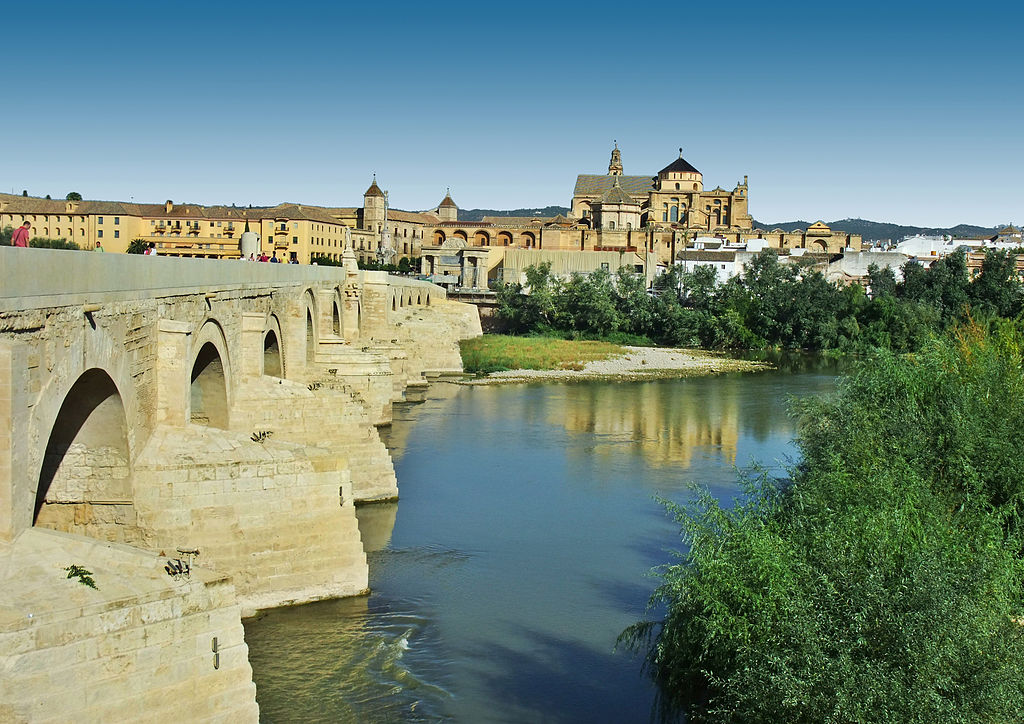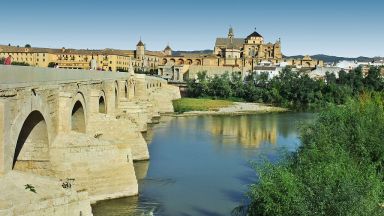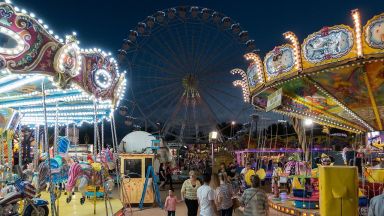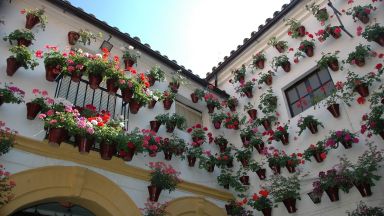Self-guided Walking Tour of Cordoba (with Maps!)
This website uses affiliate links which earn a small commission at no additional cost to you.
Cordoba is a great city to explore on foot as it’s not too big a city and has a lot of highlights which are just located close to each other. This Andalusian gem has a lot to offer when it comes to history, art and culture. Let us take you on a guided tour through 22 of Cordoba historic sites!
As far as history goes not a lot of cities have more to offer than Cordoba. The Romans, Jews, Muslims and Christians all left their mark on the city and this clearly shows in the local historical highlights. Prepare yourself for an interesting journey through historical Cordoba!
Time To Allow: 3-5 hours
The estimated time depends on whether you decide to spend some time inside the churches, palaces and other attractions. Note that some of the places on this list have certain opening hours.
Best time to do it
It’s hard to find a better view in Spain than that of Cordoba’s Roman Bridge with the beautiful light of the setting sun. So with that in mind, we would advise you to explore this route during the late afternoon or early evening when the sun is slowly starting to set in spring or autumn. If you visit Cordoba in the summertime, it’s best to walk this route in the early morning to avoid the extreme heat.
1. Torre De Calahorra
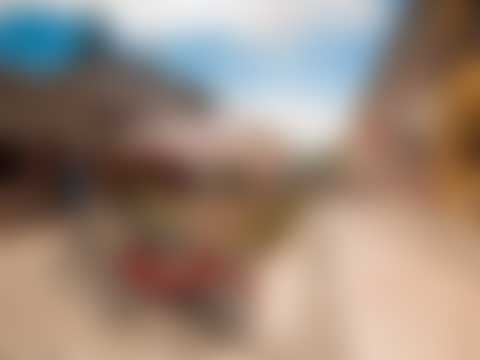
Walk across the bridge to the Tower at the far end.
Tower offering panoramic views, plus a town museum featuring waxworks & a model of the Alhambra.
Located on the far side of the Roman Bridge, the Torre De Calahorra is the oldest defensive building in Córdoba. It was first erected by the Moorsand later in 1369 Henry II of Trastamara ordered a massive reconstruction and reinforcement program. He added a third tower making the Calahorra Tower some kind of a fortress and giving it its current appearance.
The Tower contains the Living Museum of Al-Andalus and on top you have a beautiful view of the bridge and the historic old town.
Location: Torre De Calahorra s/n Puente Romano 14009 Córdoba Spain | Hours: Summer (May to September) 10.00 to 14.00 and 16.30 to 20.30 Winter (October to March) 10.00 to 18.00 | Price: 4.50 euro, reduced 3.00 euro | Website
Read more about Torre de la Calahorra
2. Puerta del Puente

From the cathedral exit via the Torre Campanario turn left and left again to head south towards the river on Calle de Torrijos.
You will pass the impressive facade of the Palacio de Congresos. The end of the street opens up into a square in the middle of which is the impressive 18th-century monument features the Archangel Raphael called the Triunfo de San Rafael de la Puerta del Puente.
Enter the square past the statue, orange trees and fountain for your first look at the Roman Bridge.
You will pass beneath the 16th century Puerta del Puente on your way to the Roman Bridge. The gate was also called Arc de Triomphe and it originally formed part of the city walls. It was built by Felipe II in 1522 and it replaced the door of the Roman era.
You can enter the gate to see a small exhibition on its history, as well as a viewpoint at the topto look over the Guadalquivir river and back over the city.
Location: Puerta del puente Plaza del Triunfo, s/n 14003 Córdoba Spain | Hours: Monday to Thursday from 10 am. to 3 pm. Friday from 10 am. to 2 pm. and from 6 pm. to 8:30 pm. Saturday from 10 am. to 2 pm. and from 6 pm. to 8:30 pm. Sunday and Bank Holidays from 10 am. to 3 pm. Summer, Monday to Sunday from 10 am. to 3 pm.| Price: Tickets: 1 € Free Entrance for children under 5 years
Read more about Puerta del Puente
3. Roman Bridge of Córdoba

Cross over the Ronda de Isasa to get to the Roman Bridge.
Roman bridge of Córdoba was originally built in the early 1st century BC across the Guadalquivir river. Most of the present structure dates from the Moorish reconstruction in the 8th century. In the center of the eastern side of the bridge is a small shrine to St Raphael, at whose feet the devout lite candles. Interest in the Roman Bridge in Córdoba peaked recently due to its appearance in Game of Thrones.
Read more about Puente Romano de Córdoba
4. Mosque-Cathedral of Cordoba

Mosque-Cathedral of Córdoba or Mezquita-Catedral de Córdoba, is a unique Mosque-Cathedral which has been a place of worship for both Muslims and Christians throughout its history. It is believed that the location occupied by the Mosque-Cathedral was dedicated to numerous divinities in ancient times. The building comprises the courtyard which is called Patio de los Naranjos, where the laminar or minaret is found and the interior space, which features impressive columns along with red and white arches.
Location: CORDOBA Calle Cardenal Herrero, 1 14003 | Website
Read more about Mezquita-Catedral de Córdoba
5. Alcázar de los Reyes Cristianos

Cross back over the river and turn left. You pass by the ruins of a watermill Molino de la Albolafia. Turn right onto Pje. Sta. Teresa Jornet and the building on your left is the Alcázar, with the Tower of Homenaje directly ahead. The entrance is the other side of the park area.
The Alcázar de los Reyes Cristianos or Palace of the Christian Kings Builtwas built under Castilian rule in the 13th and 14th centuries on the remains of a Moorish ruin. The fortress served as one of the primary residences of Isabella I of Castile and Ferdinand II of Aragon.
It features a castle, its own delightful gardens and a moorish bathhouse. There is a museum, cloister, tower to climb, prison cells, Impressive Roman mosaics, and, finally, a wonderful series of gardens and water features some stocked with large koi.
There are great views of the city and Caballerizas Reales which you will be heading to next.
Location: Calle de las Caballerizas Reales s/n | Hours: Tuesday to Sunday from 8.45 a.m. to 3.15 p.m. Last admission 30 minutes before closing time. | Price: Adult: € 5 Students up to 26 years : € 2.50 | Website
Read more about Alcázar de los Reyes Cristianos
6. Caballerizas Reales

The Caballerizas Reales or Royal Stables were built on orders of King Felipe II in 1570 as a center for developing the tall Spanish thoroughbred warhorse or Andalusian horse.
The main stables are probably one of the most beautiful stables you will ever see, with its vaulted ceiling supported by sandstone pillars is divided into smaller separate areas, known as boxes.
There is a show most nights which is worth coming to see.
Location: Caballerizas Reales Calle Caballerizas Reales, 1 14004 Córdoba Spain | Hours: Tue-Sat 10am-1.30pm, 4pm-8pm, Sun 10am-11am; closed Mon, early Jul, 1 and 7 Jan, 25 Dec | Price: Free | Website
Read more about Caballerizas Reales de Córdoba
7. Baños del Alcázar Califal

Come out of the entrance of the Caballerizas Reales and turn left. In this small square you can see the old city walls of Córdoba and the Torre de Belén which is a good example of a 12th century defensive tower. Walk past the tower and turn right beneath its arch into Calle D San Basilio. its a small alley that twists and turns – nice orange trees on the way though. At the end of the street across the square from you are the Caliphal Baths, which are mostly underground.
These are the remains of baths were built during the reign of the Caliph Alhakem II and modified in the late 11th to the 13th centuries by the Almoravid and Almohad rulers.
Location: Campo Santo de los Mártires, s/n, 14004 | Hours: From September 16 to June 15: From Tuesday to Friday from 8:30 am. to 8:45 pm. Saturday from 8:30 am. to 4:30 pm. Sunday and bank holidays from 8:30 am. to 2:30 pm. From June 16 to September 15: From Tuesday to Saturday from 8:30 am. to 3 pm. Sunday and bank holidays from 8:30 am. to 2:30 pm.| Price: Adult: € 2.50 Student up to 26 years: € 1.25 Tuesday through Friday from 8:30 to 9:30 am., except for bank holidays, is free. | Website
Read more about Baños del Alcázar Califal
8. Maimonides Statue

Carry on to the opposite side of the Baños del Alcázar Califal and walk down Calle Tomás Conde, and bear left when it splits. You will reach Plaza Maimónides, and are in the heart of the old Jewish Quarter of Córdoba or the Judería de Córdoba. This is the area of Córdoba in which the Jews lived between the 10th and 15th centuries and is a fascinating network of narrow lanes. The square is named after the philosopher Maimónides. The Bull fighting museum directly ahead. Continue a short way doen the left hand Calle Judíos to find Maimónides.
In this small square you will find the bronze sculpture of philosopher, theologian & doctor, Cordovan Ben Maimónides, which was erected in 1964. Legend says to rub his feet for good luck! Maimónides was a jewish scholar from the Middle Ages who was born and raised in Cordoba. He tried to show that the philosophy of the ancient Greek thinker, Aristotle, and Judaism supported each other.
Location: Estatua de Maimónides 14004 Córdoba Spain | Hours: 24 Hours | Price: Free
Read more about Maimonides Statue
9. Synagogue

Carry on down Calle Judíos, past the signs for the interesting Zoco, Municipal (you will be coming back later to see this) and you will arrive at the synagogue.
Located in the heart of the Jewish Quarter of Cordoba, its 14th century synagogue is one of the three best preserved Medieval synagogues in the whole of Spain.
It has a small courtyard which leads to a narrow entrance hall. To the right, there is a staircase leads to the women’s area and directly in front lies the main hall, which is decorated with Mudejar-style carvings. The wall supporting the women’s area has three arches decorated with more exquisite plasterwork. In 1492 after the Jews were expelled from the city, the building was used first as a hospital, then as the Hermitage of San Crispin and finally, an infants’ school.
Location: Córdoba Synagogue Calle Judíos, 20 14004 Córdoba Spain | Hours: Tuesday to Sunday: 9:00h - 15:30h / Monday closed. Closing days: 1st and 6th January and 25th December. | Price: Free admission for EU Citizens. 0,30 € for the rest | Website
Read more about Sinagoga de Córdoba
10. Zoco Municipal

Head back the way you came, up Calle Judíos to get to the Zoco Municipal.
Zoco Municipal is a Craft Market located in a Mudejar style building with two floors and a magnificent arcaded patio. It was inaugurated in 1954 and built in the gardens of the original Casa de las Bulas.
This is an ideal place not only to find indigenous products in the area but also to see them crafted. Leather productsare in great demand for their extraordinary quality and tradition, since their appearance in Córdoba dates back to the arrival of Muslims, back in the 8th century.
Location: Zoco Municipal de la Artesanía Calle Judíos, s/n 14004 Córdoba Spain | Hours: Everyday 10.00 - 20.00
Read more about El Zoco
11. Chapel of San Bartolome

Leave Zoco Municipal directly opposite the entrance you came in. You enter a narrow lane, Calle Averroes, and turn right. After a few twists and turns you come to the Sandstone archway entrance which enters into a lovely courtyard, off which is the Chapel of San Bartolome.
This small chapel was built between the 14th and 15th centuries, in the Baroque style was incorporated into the former Cardinal Salazar hospital, and then restored in the 19th century, and is a splendid example of Mudejar architecture.
The building is a wonderful blend of Christian structure and Arab architecture. The main entrance is covered by a portico with three arches. Inside look out for the tiled plinth, the geometric forms, the Gothic vaulted ceiling and the traces of former murals behind the altar.
Location: San Bartolomé, Córdoba Faculty of philosophy and letters Calle Averroes, S / N 14004 Córdoba | Hours: From September 15th to June 14th: From 10:30 am. to 1:30 pm. and from 3:30 pm. to 6:30 pm. From June 15th to September 14th: From 10 am. to 2 pm. Closed on Mondays (mornings) and Sundays (afternoons) | Price: From Monday to Friday: 1,50 € Saturday and holidays: 2 € | Website
Read more about Capilla de San Bartolomé
12. Hospital del Cardenal Salazar in Córdoba

When you come out of the Chapel of San Bartolome you can turn left and left again to head towards see the small and baroque Plaza del Cardenal Salazar. However you will be heading back this way so it is optional.
The former 18th century Hospital del Cardenal Salazar, is today occupied by the Faculty of Philosophy and Letters, and is one of the best examples of Baroque architecture in Córdoba. Past its imposing facade the building has an almost square plan, surrounding two courtyards.
Location: Hospital del Cardenal Salazar Plaza Cardenal Salazar, 6 14003 Córdoba Spain
Read more about Hospital del Cardenal Salazar
13. La Casa Andalusí

Heading back the way you came to the Chapel of San Bartolome and down Calle Averroes. Walk past Zoco Municipal and when you come to the Casa de Sefarad or House of Spanish Jews, which may be worth a visit, turn right onto Calle Judíos.
La Casa Andalusí is a restored 12th-century house allows the visitor to experience the lifestyle of medieval Cordoba, with its mixed Moorish-Christian influences. There is also a ancient Roman mosaic to see here. It is a small house with a lovely indoor patio and a few rooms of relics.
Location: Calle Judíos, 12, 14004 Córdoba, Spain | Hours: 10.30am-7.30pm Apr-Oct, 10am-7pm Nov-Mar | Price: €4 | Website
Read more about Casa Andalusí
14. Almodovar Gate

Head back out to the Calle Judíos and carry on the way you were going to get to the Almodovar Gate.
The Almodóvar Gate, which is mainly of Christian construction and dates from the 14th century. In the time of the Moors, it was known as Bad al-Yawz, and it is the only surviving gateway into the city of the nine built by Abd al-Rahman I. It is flanked by towers to both sides, which are linked by a parapet walk.
Location: Puerta de Almodóvar Calle Judíos, n2 14003 Córdoba Spain | Hours: 24 Hours | Price: Free
Read more about Almodóvar Gate
15. Minaret of San Juan

Walk north up alongside Paseo de la Victoria until you come to Calle Lope de Hoces. The Minaret of San Juan is another optional stop, it is about a 5 minute walk from here and we will be coming back this way.
Head down Calle Lope de Hoces and you come to a small square Plaza de la Trinidad, go straight across to Calle Tesoro. When you get to Plaza de Ramón y Cajal turn right and then left onto Calle Gral. Argote and you will come to Plaza de San Juan.
The minaret of San Juan is a 10th century Moorish minaret attached to the church of the Order of San Juan. The minaret is a square tower built of solid stone ashlars or blocks, but its most notable decorative features are the twin horseshoe arches with marble columns. It was not attached to the Mihrab but occupies the northwestern corner of the mosque. It has a square ground plan and a winding staircase with a solid newel. Outside we can still see the remains of the twin windows and the frieze placed along the top of the lowest part.
Location: Alminar de San Juan Plaza de San Juan, 4 14003 Córdoba Spain
Read more about Alminar de San Juan
16. Roman Mausoleum

Head back the way you came towards Paseo de la Victoria, from there cross the road to the Jardines de la Victoria and head north to the Roman Mausoleum.
The Roman Mausoleum is a fully restored burial crypt which dates to the during the reign of Tiberius in the 1st Century A.D.
It is a huge, cylindrical buildings, which are an unusual style for the Iberian Peninsula, and probably designed by an Italian architect, who took other mausoleums of the imperial capital as his model. The Mausoleum was built the main Corduba-Híspalis (Seville) road of which some excavated remains can be seen.
Location: Roman Mausoleum Paseo de la Victoria, 17 14008 Córdoba Spain | Hours: 24 Hours | Price: Free
Read more about Roman Mausoleum
17. Palace of La Merced

Stay in the park and head north. Turn right on Av. Ronda de los Tejares and walk about 500m until you get to Jardines de la Merced. Which is a nice landscaped park featuring a 19th-century fountain, tree-shaded walking paths, roses & a mosque. Walk anti-clockwise around the park to get to the Palace of La Merced.
The Palacio de la Merced is a baroque 18th-century convent now housing government offices & hosting occasional events. It is free to enter and see its central cloister, with its porch, and the baroque fountain.
Location: Plaza de Colón, 15, 14001 Córdoba, Spain | Hours: Monday to Friday from 7 am. to 3 pm.| Price: Free | Website
Read more about Palacio de la Merced
18. Malmuerta Tower

Head across the park to see the Torre de la Malmuerta.
According to popular legend the octagonal Torre de la Malmuerta gets its name comes from a vengeful husband who killed his wife because he incorrectly believed her to be an adulteress.
The tower was joined to the city walls by an arch that still exists to this day. There is only one octagonal room inside with a series of loopholes that lead to the exterior of the building, which is crowned by a semicircular dome. A series of steps lie at one end leading to the top floor which has magnificent views of the city.
Location: Torre de la Malmuerta 14001 Córdoba Spain | Hours: 24 Hours | Price: Free
Read more about Malmuerta Tower
19. Palacio de Viana

Head to the southeast of the park you just passed through, and through the Plaza de Colón. You come across the octagonal Tower of the Puerta del Rincón, probably built during the Christian occupation atop of a previous tower.
You can continue on the Calle Isabel Losa or take a detour, to the northeast of the small square up Pje. de la Estrella, to the Plaza del Conde de Priego with its tribute to the bullfighter Manolete.
Either way when you get to Calle de Sta. Isabel, turn right and walk about 150m until you get to the small Plaza de Don Gome, and the entrance to Palacio de Viana.
The Palacio de Viana is a stunning Renaissance palace with 12 beautiful, plant-filled patios. Occupied by the Marqueses de Viana until 1980, the large building is full of firearms, historic furnishing and paintings as well as a library with more than 7,000 volumes. You can just walk round the lovely patios and garden with a self-guiding leaflet, or take a guided tour of the rooms as well.
Location: Plaza de Don Gómes, 2, 14001 Cordova, Spain | Hours: Tue - Sat: 10 am - 7 pm Sun: 10 am - 3 pm | Price: €8 | Website | Viana Palace Gardens and Patios Entry Ticket
Read more about Palacio de los Marqueses de Viana
20. Palacio de Orive

Head south (left) down Calle Enrique Redel until it bends around to the east, switch to Calle Hermanos López Diéguez and continue south. When you get to the T junction turn right onto Calle San Pablo. Walk 40m and you will come across the Plaza de Orive to the south, which houses the Palacio de Orive.
The Palacio de Orive is an unique Renaissance building, built in 1560, is one of the most notable works of the architect Hernán Ruiz II. The most striking feature is the entrance with its decorative arches and its inner courtyard. It is a government building and if open free to enter.
Location: Palacio de Orive Plaza de Orive, 2 14002 Córdoba Spain | Hours: From Monday to Saturday: 10:00 to 14:00 and from 17:00 to 21:00 Sundays: 10:00 to 14:00 | Price: Free
Read more about Palacio de Orive
21. Templo Romano

Carry on down Calle San Pablo until you come to the large town-hall with a pedestrianized are in front of it. The other side of it is the Templo Romano.
The ruins of the former Roman Temple are, apart from the Roman Bridge, the most considerable heritage of the Roman culture that influenced the entire region two thousand years ago.
Several monumental columns, topped with massive yet beautiful capitals, aloft to the skies over Cordoba. Especially after nightfall, when the illuminated columns appear in warm colors, visitors are overwhelmed by their natural beauty.
The Templo Romano is a 1st-century AD Roman temple is viewed from the street. Its 11 tall white columns make a striking sight, especially when floodlit. Dedicated to emperor worship, the temple is thought to have looked east towards a huge Roman circus where horse races and other spectacles were held.
Location: Templo Romano Calle Capitulares, 1 14002 Córdoba Spain | Hours: 24 Hours | Price: Free
Read more about Templo Romano de Córdoba
22. Plaza del Potro

If you are hungry head west to the Plaza de las Tendillas or south east to the Plaza de la Corredera for food and drinks.
After go south 450m along Calle San Fernando, and turn left onto Calle Romero Barros after 100m you will come to the Plaza del Potro.
This is a historical square featuring a 16th-century Renaissance-style fountain with a colt statue. Just off the square is Posada del Potro – which is an inn that played a part in Don Quijote, where Cervantes described it as a ‘den of thieves’. Also off this square are the Museo Julio Romero de Torres.
Continue to head south to come to the Guadalquivir River and walk along the Paseo de la Ribera to come back to your starting point.
Location: Plaza del Potro s/n 14003 Córdoba Spain | Hours: 24 Hours | Price: Free
Read more about Plaza del Potro
Save this Guide for later!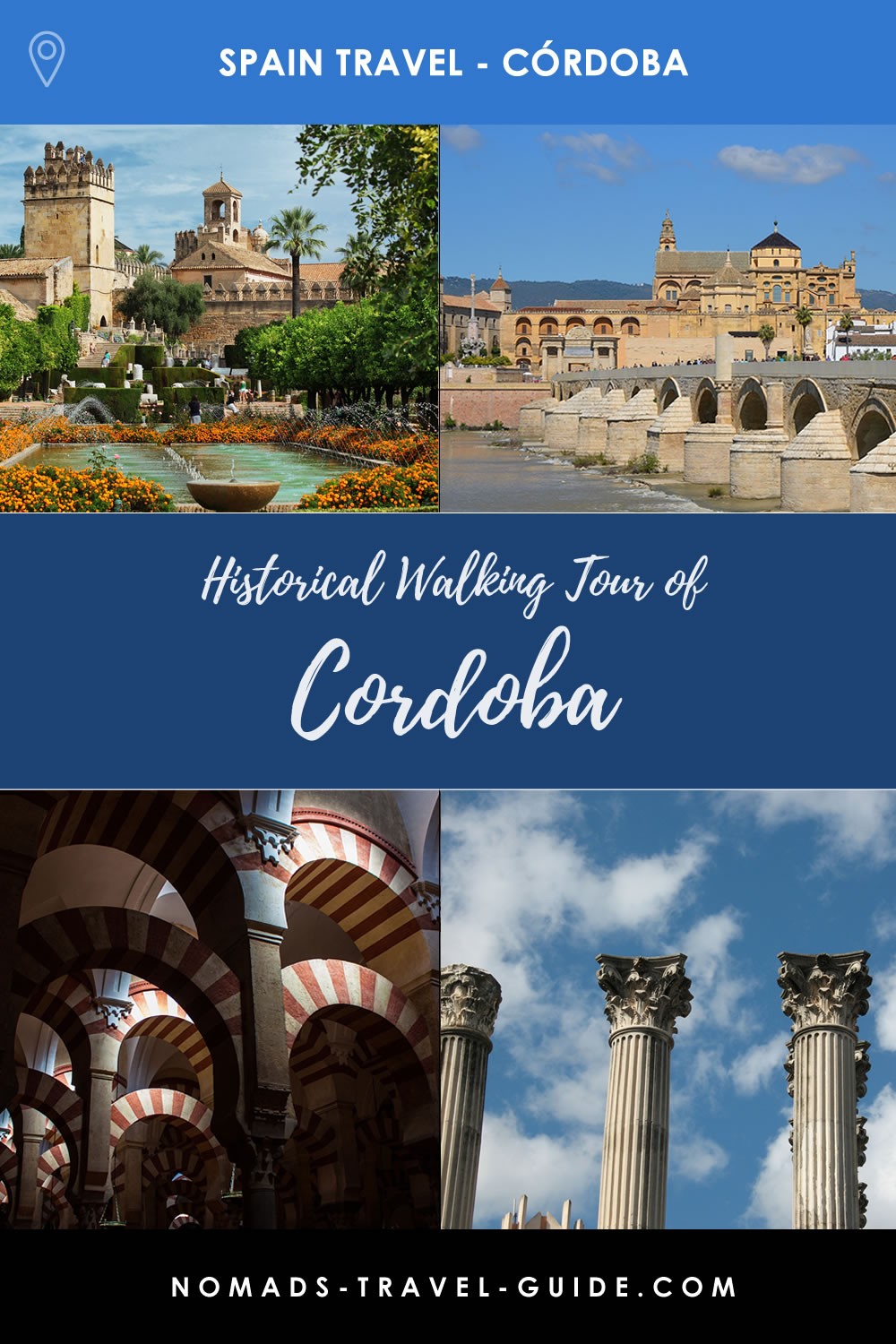

This website uses affiliate links which earn a small commission at no additional cost to you.
